3x3x3 LEDCube
So, i build these LEDCubes.

Because i build a small army of them i sort of made a power strip and some extension cords to supply all of them with a single power supply.
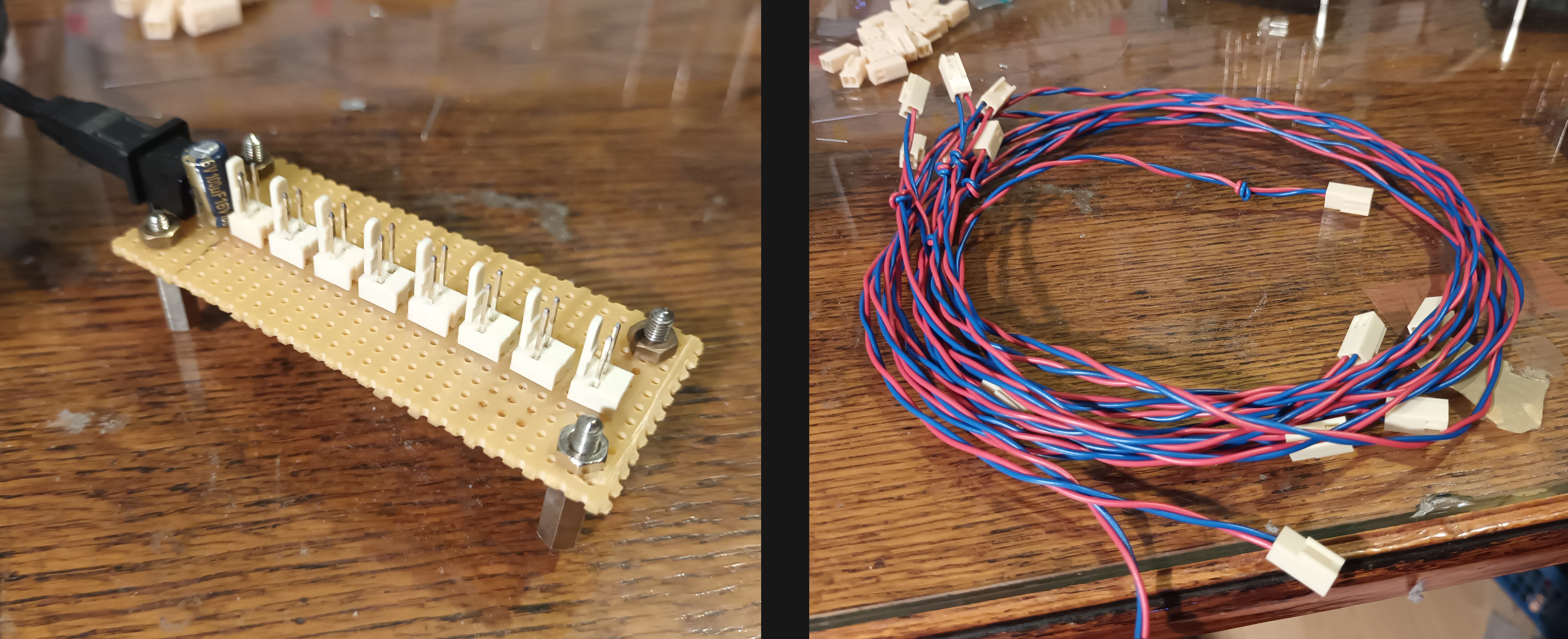
You can see all LEDCubes in action in this video.
I will not explain how they work. This great Video of GreatScott tells you everything you need to know: LED Multiplexing by Great Scott
However during the project i ran into some problems they usually don't tell you in these 10min tinkerer video tutorials.
1. Problem: Bad Light Output
To control all LEDs and to make the physical construction of the cube possible, the LEDs are controlled by multiplexing. For the three levels of the cube this means each LED is only turned on for a third of the time. Reducing the brightness to a third. Increasing the current through the LEDs by a factor of three will not bring the brightness to its original level because of the nonlinearity of LEDs far over there rated current.
To solve this do not use standart LEDs but use super bright LEDs. From experience i would recommend nothing below 200mcd. Also keep in mind that the eye is most sensitive to green and blue light, so these colors look much brighter as red for the same light output.
2. Problem: LEDs Are Not Made For This
The standart 3mm and 5mm LEDs are made to radiate all their light into one direction, up. Usually they sit in front panels as index light. Often they even have lenses inside the plastic package to not "waste" any light going sidways. A light angle of 30° is usally meantioned in datasheets.
But when you are looking at the cube, you usually do that from one of the sides of the cube and not directly from the top. So all you see is the dim light which comes from the side of the LEDs.

Next time you stand in front of an LEDCube which is not well visible, look at it directly from the top. From there it probably looks too bright.
Again this can be compensated by super bright LEDs, because more light means also more stray light to the side. Additonally i recommend to use diffuse LEDs.
3. Problem: The Right Level Driver
Assuming you got the right LEDs you might still run into a problem. The current for each level of the cube runs through a single transistor level driver. How much current depends on how many LEDs are turned on in this level. That leads to a variable voltage drop across that transistor. If you are using current limiting resistors to set the LED current (like my LEDCube) then the current and the brightness of the LEDs might change noticable depending on how much LEDs are turned on.
Again you can solve this by not using a junk bin transistor but by making a fitting choice. In my experience a MOSFET with an rds,on of 2% or less of your current limiting resistor is good enough so that no change in brightness can be recognised.
So if your current limiting resistor is 56Ohm, your level driver should have an rds,on of 50mOhm.
Alternatively, instead of current limiting resistors you can use constant current drivers like the PCA9955, which solves this problem completely.
4. Problem: Ghosting Of LEDs
Because LEDs usually radiate the most light at the top, so called ghosting can appear. The LED shines most of its light at the bottom of the LED above, there it looks like this LED is turned on.
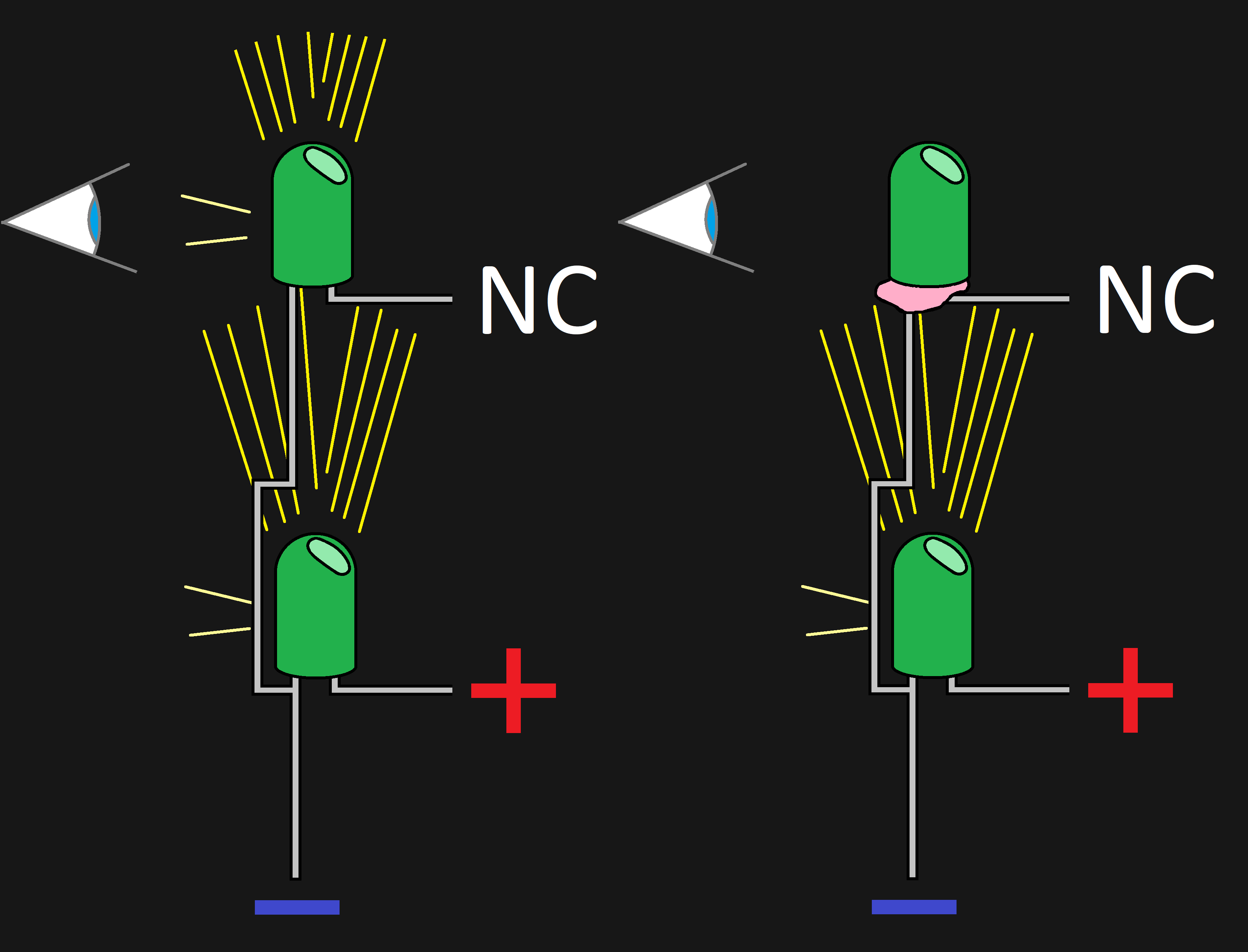
To prevent this, just put some intransparent dot of glue or paint under each LED as a light shield.
 Timo
Timo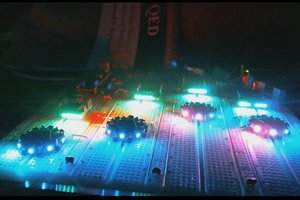
 ClockLoop
ClockLoop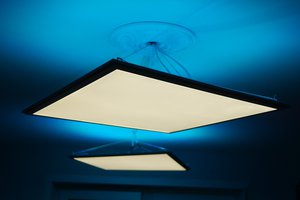
 Mikhail Svarichevsky
Mikhail Svarichevsky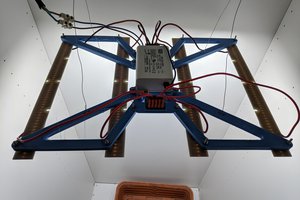
 Niko
Niko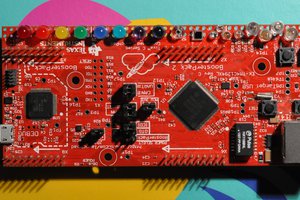
 Matthias Koch
Matthias Koch